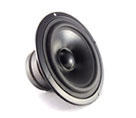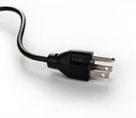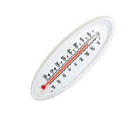Vacuum Tech Basics
5 Things You Might Not Know About Vacuum Science's Feature
 Vacuum reduces oxygen.
Vacuum reduces oxygen.
The lower the pressure and the higher the vacuum, the lower the air (oxygen).
Anything that oxidizes in the air or reacts with oxygen and deteriorates can be kept in a vacuum to maintain its condition.
 No sound can be heard.
No sound can be heard.
A substance (air) that transmits sound vibrations is needed to hear a sound.
In a vacuum state with reduced air, sound vibrations cannot be transmitted, and no sound can be heard.
 Vacuum does not conduct electricity.
Vacuum does not conduct electricity.
The number of gas molecules is reduced in a vacuum, which makes ionization and increase of electric charge due to collisions between particles less likely, and the vacuum becomes an insulator.
 Heat does not cool down.
Heat does not cool down.
Heat cools down in daily life. This is a phenomenon that occurs when gas molecules in the air collide and lose heat.
However, in a vacuum, the gas molecules are blocked. Collisions that take heat away do not occur so that the heat can stay warm.
 Boiling point falls.
Boiling point falls.
The boiling point of the liquid decreases as the pressure decreases in a vacuum.
The vacuum is also used to produce powdered juice by placing the juice in a vacuum container and evaporating it at a low temperature, and separate salt from seawater.
Vacuum Tech Basics
HOW TO
- Vacuum Tech Basics
- Fundamentals of Vacuum Pumps (Low to Medium Vacuum)
- Fundamentals of Vacuum Pumps (High Vacuum)
- Fundamentals of Vacuum Valves
- Fundamentals of Vacuum Gauges
- Fundamentals of Quartz Crystal Oscillation Type Deposition Controller
- Fundamentals of Leak Detection
- Fundamentals of High-Speed Spectroscopic Ellipsometer
- Fundamentals of Gas Analyzer (Process Gas Monitor)
- The Others
- How to Choose The Best Products
- Old Models vs. New Models
- Troubleshooting